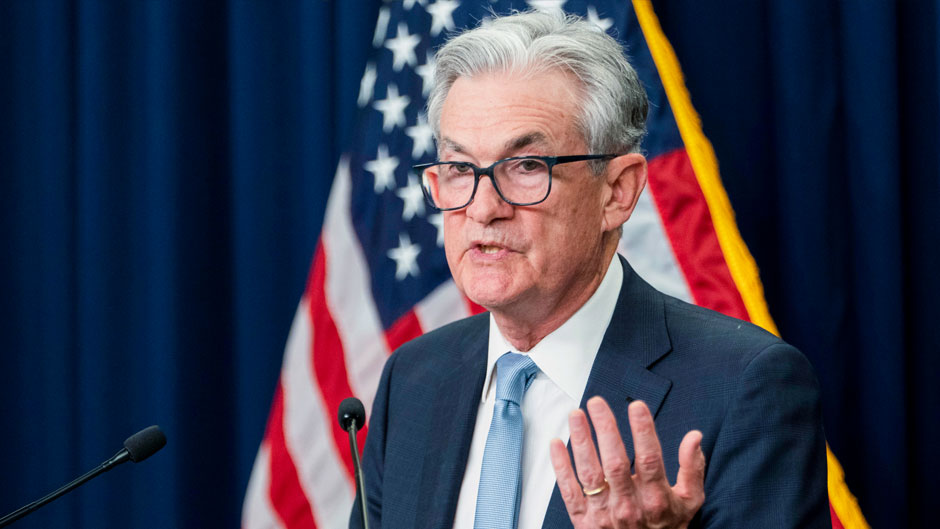While the Federal Reserve (Fed) this week ordered the largest interest-rate hike in 28 years, experts in the University of Miami Patti and Allan Herbert Business School—Manuel Santos, professor and economics department chair, and David Kelly, professor and academic director of the Master of Science in Sustainable Business—suggested that the U.S. central bank should have acted sooner to counter the spiraling prices of the past weeks.
On Wednesday, Jerome Powell, chairman of the Fed, announced an aggressive three-quarters of a point hike and indicated that a similar increase could come in July if the economy doesn’t respond.
“The situation in the United States is closely related to the pandemic—a very expansionary monetary policy and supply-chain disruptions that have led to higher commodity prices,” Santos asserted. “It’s clear that interest rates have been too low, and hence the Fed needed to increase interest rates; moreover, the scenarios it’s been contemplating so far appear to be overly conservative,” he added.
“A labor shortage and COVID-supply disruptions reducing the amount of goods produced, combined with the Fed keeping interest rates low—resulting in lots of borrowing of money that was sitting in banks—have caused the current situation,” Kelly said. “As this new money was borrowed and spent, we have a lot of dollars trying to buy few goods that are available, causing higher prices along with the low production—a situation referred to as ‘stagflation.’ ”
Some have compared the current trend to the stagflation of the 1970s, which was launched by double oil shocks, yet neither economist saw much similarity.
“So far, they are not comparable. We are relying less on oil these days, and the oil shocks of the 1970s were unpredictable,” Santos noted. “China is playing an important role in the global economy, and that was absent before.”
Kelly acknowledged the similarity that oil prices increased in both instances and that the Fed allowed “too much money to chase too few goods, which always results in inflation.”
But he emphasized that the current economic turbulence is characterized by COVID-supply disruptions and labor shortages, and that the U.S. economy today is far less dependent on oil than in the 1970s.
COVID lockdowns, in the U.S. and also especially in China and other critical markets, have caused global supply-chain disruptions, which have spurred further reverberations in the U.S. labor market, the economist noted.
“The labor shortage is the result of many policies, including generous unemployment benefits, early retirements resulting from COVID layoffs, and immigration restrictions,” Kelly said. “The Fed’s low interest rate policy can also be tied to things like excessive government borrowing. Despite that the Fed is largely independent, it still feels some pressure to keep interest rates low to make it easier for the government to borrow.”
Yet Kelly pointed to the independence and unique responsibility of the U.S. central banking system as the most important hedge against runaway inflation and longer-term economic tumult such as is occurring currently in Venezuela.
“The Fed is designed to be free of political influence, and it’s this independence together with its responsibility to maintain low unemployment and stable prices—and not finance government payments—that ultimately guards against runaway inflation,” Kelly said. He explained that inflation can spiral when businesses and workers put automatic price and wage increases into their contracts in a response to inflation that had an original identifiable cause.
Kelly applauded the Fed’s move to hike interest rates but called for more to be done to mitigate the labor shortage such as increasing legal immigration, reducing regulatory and permitting barriers to domestic production, and reducing benefits to not working. And not just unemployment insurance, he pointed out, but also things like eviction moratoriums and improper social security disability claims.
He suggested that President Joe Biden expressing clear support for the Fed’s efforts to reduce inflation would also help.
Santos highlighted that inflation is propelled by external factors such as commodity prices but may be amplified by some mechanisms like increasing production costs and wages. In a pessimistic economic scenario, inflation may be close to 10 percent and remain persistent, he noted.
Faced with such a scenario as the current one with inflation and reduced supplies, what’s the best advice for households and individuals?
“The stock market has undergone a serious correction, and volatility may persist given uncertainties about economic policy,” said Santos, adding that he did not foresee a shortage of basic products. “Inflation is eroding the purchasing power of our cash, but it does not seem a bad idea. Sophisticated investment strategies may require a good analysis of the economic situation and may be risky.”
Kelly noted that inflation hurts low-income households the hardest because as renters they have few assets.
“In inflationary times, you want to have assets which go up with inflation. Thus, you want to own a home, not rent, as the homeowner does not see the increase in rents due to inflation,” Kelly pointed out. “Similarly, you want to own stock, as stocks represent ownership of real company assets, whereas dollars in your bank lose purchasing power. You’d also like a job where your pay can rise with inflation to some degree.”

